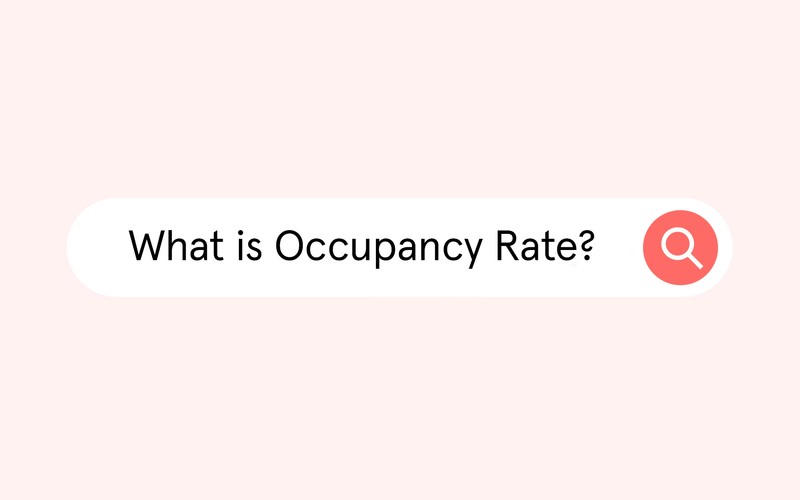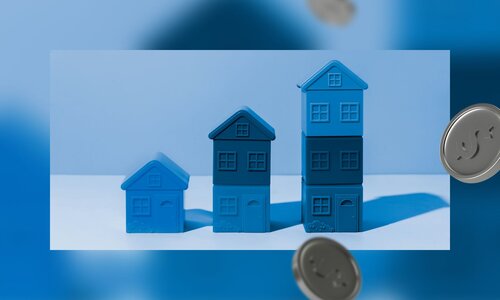A real estate investment is only as good as the return on investment it provides. As a real estate investor, you must keep your eye on the metrics that can impact that rate of return, key among them the occupancy rate. That is, how often your property is occupied and bringing in income.
Even before you purchase a property, it’s important to look at the occupancy rates in surrounding areas and for similar-sized properties. It’s no good to purchase a rental property that no one wants to live in or a vacation rental that no one’s booking for their vacation. Once you’ve bought the property and put it up for rent, the task falls upon you to keep those occupancy numbers up. Doing so will be one of the most essential factors in the profitability of your investment.
In this article, we’ll talk about occupancy rate—what it is, why it’s important, how to calculate it, and how to ensure that you’re maintaining high occupancy rates for your investment properties.
What is occupancy rate?
Occupancy rate is defined as the ratio of space rented out or used to the total amount of available space. Conversely, the vacancy rate of a property or space is the amount of time the property is not rented out.
Let’s say, for instance, that a property is available for rent 100 days in the year but is only rented out for 70 of those days. The occupancy rate of that property would then be 70%, while the vacancy rate would be 30%.
Occupancy rate is an important metric, and it also finds use outside of real estate. Hotels, bed-and-breakfasts, senior housing, hospital beds, and rental units must calculate their occupancy rates for various reasons. Occupancy rates are even used in call centers—to compare the total amount of time agents spend on calls with their total working hours.
Regarding the hospitality industry, the occupancy rate is calculated using the number of units available rather than time. For instance, for a hotel with 100 rooms, with 75 of those rooms occupied, the occupancy rate would be 75%.
Why occupancy rate matters
Occupancy rates matter to real estate investors because the occupancy rate of a commercial property will determine how much cash flow it generates and whether it’s ultimately profitable. If you’re investing in a residential building, you’ll want to be sure that the property will be rented out a majority of the time, and similarly, a real estate investor will only invest in a hotel or a shopping mall that has high occupancy rates.
If you end up with a property with low occupancy rates—either because of the property itself or market conditions—you will need to put time, money, and effort into finding additional tenants.
When a property sits empty, it’s not generating an income, but the outgoings remain. And if you’re still paying maintenance costs, property taxes, and perhaps even a mortgage payment on a home or office space that’s sitting empty, you’ll start running into losses. The average occupancy rate and, on the flip side, the vacancy rate are good numbers to keep your eye on because the occupancy rate is a Key Performance Indicator (KPI) of the overall health of your property.
In the hotel industry, for instance, the hotel occupancy rate is one of the key considerations for hotel owners, whose profits are primarily determined by how many occupied rooms there are compared to the total number of available rooms. A low hotel occupancy rate would mean that not enough hotel rooms have been booked, and measures need to be taken to improve this figure, such as lowering the room rate or offering discounts on large bookings.
How to calculate occupancy rate
The occupancy rate is calculated by dividing the number of occupied units by the total number of units available and multiplying that number by 100. It is always expressed as a percentage.
The occupancy rate formula is as follows:
Occupancy rate = (Occupied units / Total number of units) x 100
If you were doing this calculation for a single property, say, if you wanted to know what your annual occupancy rate was for that property, you’d simply use the number of occupied days and divide that by 365 (total days in a year) and multiply by 100 to arrive at the occupancy rate.
What is a good occupancy rate?
While there is no one specific measure to determine whether or not an occupancy rate is good, there are comparisons and averages that you can look at to see how your property is faring.
It’s important to keep in mind the market conditions when you do this. National rental vacancy rates were close to 6% during 2022, so that’s a number you can use as a potential benchmark. During the pandemic, however, many vacation rentals saw their occupancy rates plummet, a market-wide trend that impacted almost everyone. Occupancy rates can also fluctuate widely between cities and regions.
The average breakeven occupancy rates for various properties are:
- Hotels/motels: 55%
- Resorts: 70%
- Retirement homes: 85%
- Apartment complexes: 88%
You can also check out AirDNA’s 2023 projections for US-based short-term rentals to see if your numbers match up.
Other important metrics to consider
Here are a few other metrics you’ll want to keep in mind when looking at occupancy rates.
Inventory occupancy vs. available occupancy
We can further divide occupancy rates into two different types: inventory occupancy and available occupancy. Inventory occupancy considers the total number of existing units, whereas available occupancy only considers the units that are currently available for rent at any given time. Because some units may not be available for use temporarily due to renovations or damage, the inventory occupancy is almost always lower than the available occupancy.
Some investors will also look at economic occupancy, the difference between a property’s actual rental income and potential rent. This, too, is presented as a percentage.
Average Daily Rate (ADR)
The Average Daily Rate is a calculation typically used in the hotel industry and is essential for revenue management. The ADR is calculated by taking the total revenue from rooms and dividing it by the total number of rooms sold. Taking stock of occupancy rate and ADR together can help give an overview of the business and its performance.
Revenue Per Available Room (RevPAR)
While ADR gives an average of what a hotel can earn, Revenue Per Available Room or RevPAR helps calculate the average income generated from each room. The ADR is multiplied by the occupancy rate to calculate a hotel’s RevPAR.
How to improve your occupancy rate
Keeping your occupancy rate high is important for the health of your real estate investment and necessary to ensure enough cash flow to keep you in profit—or, as the case may be, out of loss. Here are some ways to improve the occupancy rates in a residential or single-family rental.
Be strategic about your rental rates to make more money and charge more, right? And while that can be a smart strategy if the market supports it, it’s also crucial to keep your occupancy rates high when doing so. If you find that raising the rent is lowering your occupancy rate, you may have to run your numbers to see which comes out on top: higher rates with lower occupancy or higher occupancy with lower rates.
The goal is to maximize your profit, and sometimes that’s more easily achieved if you optimize for competitive pricing.
Find quality tenants
It helps your occupancy rates when people stay in your property for longer periods, especially in residential units. It’s possible to have very high occupancy rates with residential properties as long as you’re doing your due diligence and renting to people who are intent on putting down roots.
Retain tenants
Finding great tenants is the first step. Keeping them in your property is the next. To do this, you want to ensure that your tenants are happy in your property and don’t have any reason to move.
Responding to repair requests in a timely fashion, ensuring the property is maintained to a certain standard, and forming strong and pleasant relationships with your tenants can go a long way in making them feel at home and increasing their length of stay. These are all things you can outsource to a property management company.
The bottom line
Knowing your occupancy and vacancy rates is essential, especially for commercial real estate investors who want to profit from their properties and keep the cash flow steady year after year. By understanding your occupancy rate and taking steps to improve it, you ensure a good rate of return on your investment.
Are you interested in real estate investing but not ready to purchase a property outright yet? Don’t fret. At Arrived, our mission is to give everyone—regardless of their background and income levels—the chance to get on the property ladder. Through our platform, you can purchase shares of rental properties for as little as $100 and start building a portfolio—and a rental income—today. Please browse our available properties here.







